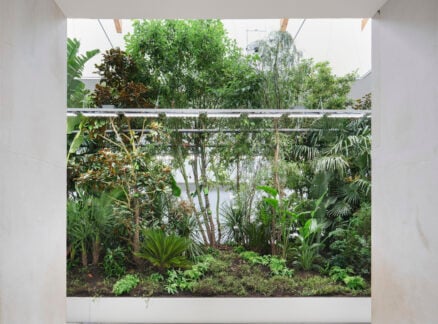September 10, 2008
Investigating Intersection
A collection of essays picks up where Jane Jacobs left off.
It is probably fitting that I got diverted on my way to write about Intersection, the first publication in the ChainLinks series, which I had planned to delve into when it was published last spring. The volume, which is subtitled Sidewalks and Public Space, takes as its jumping off point Jane Jacobs’ groundbreaking investigations into that topic in The Death and Life of Great American Cities. And, of course, one of Jacobs’ abiding lessons is that opportunities for diversion are hallmarks of a good public space. “The ballet of the good city sidewalk never repeats itself from place to place, and in any one place is always replete with new improvisations,” Jacobs’ wrote in a selection from her book that is reprinted in Intersection.
A spinoff project of the sadly dormant, genre-crossing literary journal Chain, each volume in ChainLinks is guest edited and, according to the series editors, “continues Chain’s desire to provide space for work that slips through the cracks and falls outside of disciplinary boundaries” (disclosure: I published a short piece in Chain #11: Public Forms). For Intersection, editors Marci Nelligan and Nicole Mauro invited a range of artists and thinkers to respond to a specific selection from Death and Life (the one exception is sociologist Mitchell Duneier’s essay on New York street magazine vendors, excerpted from his 1999 book Sidewalk). Formally, the pieces are surprisingly less adventurous and, on the whole, more academic than those in Chain, but they provide intriguing commentary on public life almost 50 years now after Jacobs’ book.
Where Jacobs speaks of the lively and intricate dance as she walks down her Greenwich Village street encountering various “public characters” (neighbors with babies, children on bikes, the locksmith, the tailor), the contributors to Intersection write of a much more contested, depressing or even isolated space. Historian Claire Potter assesses a debate over sidewalk chalking by gay rights groups at Wesleyan University, Melissa Ngo challenges the personal invasion wrought by public surveillance, and performance artist William Pope L. writes of and photographs the public crawls he has been engaging in and leading for 20 years, using the sidewalk as a stage for compelling investigations of subjugation, humility, movement and desire. Duneier’s “public characters” bring the warmth of daily human interaction back into the mix, though it is under the sad specter of the crack epidemic, which is what led many of the men he portrays to their lives on the streets.
Artist Paul Madonna, whose comic strip “All Over Coffee” runs in the Sunday San Francisco Chronicle, examines a dialogue of a different sort. His photo essay begins with a brief visual history of sidewalk graffiti in San Francisco’s Mission District. He concludes with a fascinating back-and-forth between stencilers whose sentimental messages have proliferated throughout the neighborhood, and those who mock or deface their work. And again, as Madonna points out, while an exchange is inherent, human contact is all but absent. “Anonymity is essential,” he writes. “This inability to claim authorship offers freedom of expression, allowing stencilers to comment and criticize at will.”
“On the sidewalk, we become who we are as a function of the city, just as the city becomes the mirror of our humanity,” Nelligan and Mauro state in their introduction. I believe their depiction of a city that, since Death and Life, is decidedly more anonymous is painfully accurate. Yet I could not help wishing for reminders that, though dwindling, the city also still provides spaces for Jacobs’ good, old-fashioned, mundane, face-to-face dance.
Recent Viewpoints
Viewpoints
Sustainability News Updates for Q2 2025





